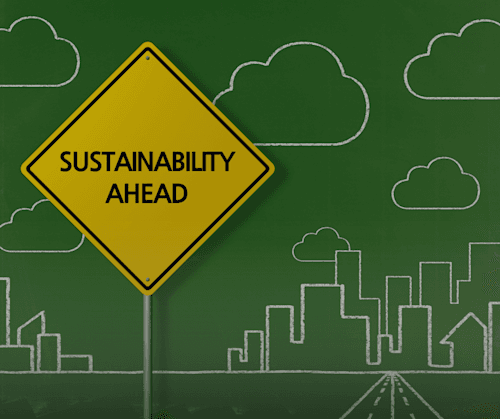
Floating homes and sustainability – a greener way to live
Floating houses are increasingly popular, offering a combination of luxury and environmental sustainability. They are not only an attractive architectural trend, but a response to challenges such as climate change, pollution and lack of space. Placed on pontoons, they adapt to the tides and do not disturb natural ecosystems. The sustainable aspect includes lower consumption of energy and water, as well as a reduction of CO₂ emissions. Thus, floating houses become part of the solution for urbanisation and the growing pressure on nature. They offer a modern home, but also a step towards a greener future.

Untitled design (51)
Imagine waking up to the gentle swaying of the waves, without the noise of traffic, without concrete underfoot, but with all the comforts of a modern home. As idyllic as it sounds, living in a floating home is becoming increasingly popular not only because of its attractive design and location, but also because of the sustainable lifestyle it supports.
In a world where climate change, pollution and lack of space are increasing challenges, floating homes represent an innovative solution that combines luxury and sustainability. In this blog, we discover why floating homes are much more than an architectural trend – they are a step towards a greener, smarter future.
Why does sustainability become a key criterion in construction and housing?
The pressure on the environment is becoming unsustainable. Cities are expanding, concrete surfaces are suffocating nature, and the energy consumption of classic houses does not follow the rhythm of the green transition. Water consumption, heating, cooling, waste disposal and CO₂ emissions from our homes make up a significant part of the total ecological footprint.
In this context, floating houses appear as a sustainable alternative to traditional construction - especially in coastal areas, on lakes and along the coast, where space is becoming an increasingly precious resource.
How do floating homes reduce their ecological footprint?
Minimal impact on the soil and the natural environment
Unlike traditional construction, floating homes do not require digging foundations or pouring concrete. They are placed on pontoons or floating platforms that adapt to the tides, thus avoiding permanent devastation of the soil and plant life below the house.
Additionally, most floating homes can be relocated without disturbing the environment, making them suitable for seasonal or temporary housing in sensitive ecosystems.
Energy efficiency and renewable energy
Solar panels, heat pumps and smart energy management systems are increasingly becoming part of floating homes.
For example, the Dutch Schoonschip project in Amsterdam brings together 46 floating houses that are interconnected in a micro-grid, with each house producing its own energy through solar panels. Residents use heat pumps, underfloor heating and channel water heating, along with a smart energy distribution system. (Source: Schoonschip Amsterdam, https://schoonschipamsterdam.org)
Such systems not only reduce energy consumption, but also encourage local self-sustainability, reducing dependence on large electricity grids.

Untitled design (52)
Effective waste and water management
Modern models of floating houses often have integrated systems for gray water treatment, rainwater collection and smart waste management.
As part of the Floating Seahorse Villas project in Dubai, each villa is equipped with water reuse systems, eco-friendly toilets and technologies that reduce water consumption by up to 50%. (Source: The Heart of Europe Project, Dubai)
This level of water care is extremely important in the context of climate change and increasingly frequent droughts.
Sustainable design and local materials
Unlike mass-produced concrete, floating homes often use recycled or local materials. Wood from renewable sources, natural fiber insulation, and moisture-resistant materials with low VOC emissions (harmful volatile organic compounds) form the basis of sustainable design.
Oasis MEU, for example, uses energy-efficient materials and construction techniques to reduce heat loss in its luxury floating homes, which reduces heating and cooling costs year-round.
Life on the water – a new philosophy of living
A floating house is not just a different home – it brings a different way of thinking. People who live in floating houses often manage resources more consciously, appreciate the nature that surrounds them more and strive for a simpler, but higher quality lifestyle.
In this sense, floating houses are more than “eco-friendly” buildings – they are a tool for personal change and a more conscious life.
Are floating houses the future of urban living?
More and more architects and urban planners around the world are considering the possibilities of floating settlements, especially in cities that are faced with rising sea levels, land shortages and overcrowding.
In the Netherlands, a country known for its struggle with the sea, there are more and more such projects – from individual houses to entire settlements. In Bangkok, The Float House River Kwai project shows how luxury tourism can also be sustainable, while Scandinavian countries are known for integrating floating objects into urban areas.

Untitled design (75)
Key advantages of floating houses for the environment and society
• Less CO₂ emissions – thanks to energy self-sufficiency and smart systems
• Preservation of the natural environment - without the need for concreting and permanent procedures
• Saving resources - water, energy and materials are used more rationally
• Location flexibility – houses can be moved without harming nature
• Greater connection with nature - which, in the long term, encourages a change in lifestyle habits
Floating houses are not just a trend - they are a necessity
If we are serious about a sustainable future, solutions like floating houses are not only desirable - but necessary. Combining technology, design and environmental responsibility, they offer a new housing model that is in harmony with nature, not against it.
Whether you're thinking about investment, tourism or a new way of life, floating houses offer luxury without the guilt – because you're not wasting nature to get comfort.